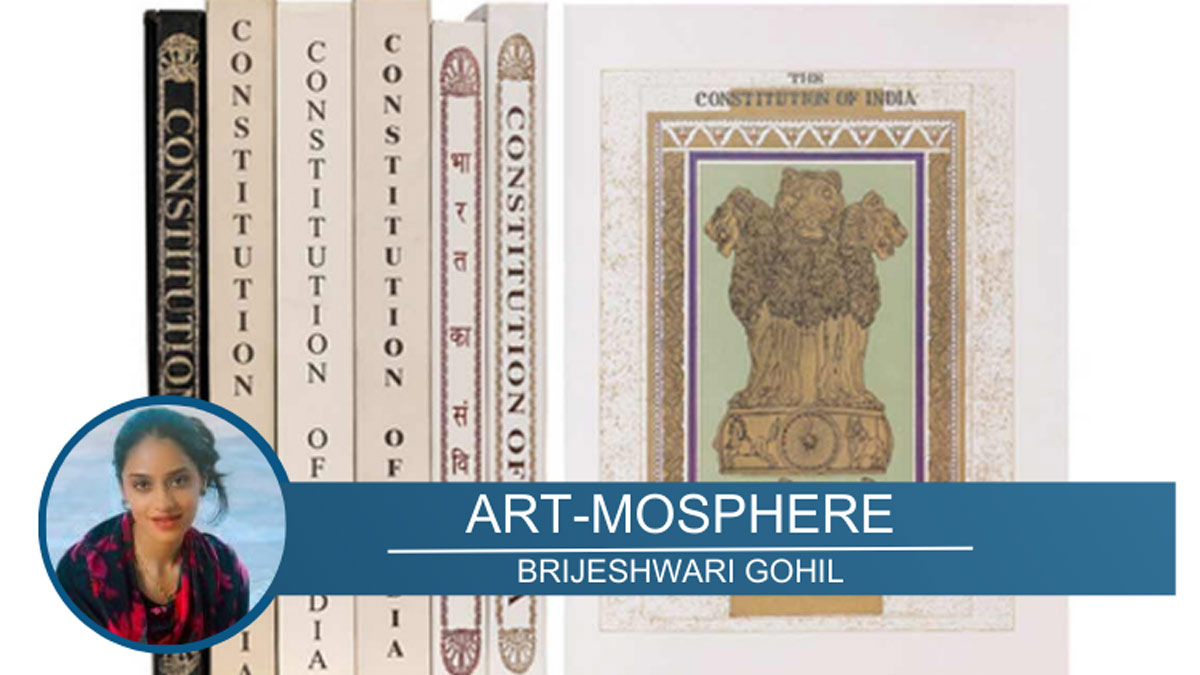'At the stroke of the midnight hour, when the world sleeps, India will awake to life and freedom. A moment comes, but rarely in history, when we step out from the old to the new, when an age ends, and when the soul of a nation, long suppressed, finds utterance.' As India’s first Prime Minister Jawaharlal Nehru delivered this powerful speech titled 'Tryst with Destiny’ on the 14th of August 1947, the long battle and fight for independence ended.
The nation comes together to celebrate India’s 78th Independence Day on the 15th of August 2024. Books are one of the most integral ways of documenting history. Be it personal journals and detailed memoirs or the more formal state/government records and reports. Ancient texts help us understand human evolution and shed light on the way kingdoms flourished, provinces were governed and ruled. Illustrated manuscripts with ornate calligraphy and pictorial depictions have transformed historic texts, and limited-edition books into collectors' items. Many times these important, rare works of history and art find their way to quaint antique stores and celebrated auction houses.
For example, in 1994, Bill Gates bought the Codex Leicester manuscript by Leonardo da Vinci for approximately 256 crore Indian rupees. The manuscript is a historic masterpiece, featuring sketches, diagrams and notes in Leonardo's ‘mirror writing’ on a variety of subjects ranging from water to astronomy.
Over 500 years old, the collection is a rare work of art.
In more recent times, the first illustration, a watercolour artwork for the cover of the first book in the Harry Potter series fetched 1.9 million USD at an auction by Sotheby’s New York. A long-drawn ten-minute bid in June this year between four collectors led to a record-breaking price for the illustration. The first edition copy of the book Harry Potter and the Philosopher’s Stone, on the other hand, sold for a whopping 4,21,000 USD at Heritage Auctions in 2021.
Some of India’s leading auction houses have also been conducting rare book auctions and sales to bring to the forefront texts which are long forgotten or seldom available. These books range from literary masterpieces to historical documentation. In a recent auction by SaffronArt, a rare first edition of the Indian Constitution sold for a record Rs 48 lakhs. This was only one of the 1000 copies made by the Survey of India in Dehradun. The original features printed signatures of the makers as well as ornate calligraphy by the legendary Prem Bihari Narain and artworks by Modern Indian artist Nandalal Bose.
Bose, along with artists from Shantiniketan’s Kala Bhavan, was given the task of embellishing the pages of the longest-written national constitution in the world. With real gold intricate lines and borders and 22 works of art, celebrating different aspects of what the Constitution stands for. After four long years, the 221-page document, a work of art and an integral aspect of Indian history was brought to life. These 22 works of art, include the National Emblem and slogan, ‘Satyameva Jayate’ (Truth Alone Triumphs), a seal from the Indus Valley Civilisation, which are all testimony to India’s rich ancient history.
The traditional Indian education system, the Gurukul is beautifully illustrated celebrating our Vedas. Even Nalanda University, which was the ancient centre of learning and is now a UNESCO World Heritage Site is showcased in the 10th part of the Constitution. Mythological scenes of the Ramayana, chapters imparting the wisdom of the Bhagavad Gita, the spread of Buddhism, and the non-violence preached by Mahavira are all juxtaposed with key messages of the Constitution ranging from Fundamental rights to Elections.
Brave and valiant rulers such as Rani Laxmibai and Chhatrapati Shivaji Maharaj are celebrated in their stunning artworks, adopting the delicate lines of miniature painting and the Bengal School of Art. Heroes of the freedom struggle such as Mahatma Gandhi and Subhash Chandra Bose have also been given their due with illustrations depicting them in the Constitution, the supreme law of our country. The works of art are a beautiful way of celebrating India’s diverse cultural, natural, tangible and intangible heritage. Each of these one thousand original texts, is a rare collectable, a priceless treasure.
The Constitution of India was implemented three years after India gained independence. During these three years, kingdoms of Princely India merged into a free and democratic India with the State of Bhavnagar being the first to ‘voluntarily’ offer to embrace a new era. This year, in the digital age, as we celebrate freedom with the theme of ‘Viksit Bharat’ or ‘Developed India’ let us not forget to uphold the values of our Constitution and appreciate the diverse art and culture, which has even found its way to our historic books and manuscripts.


